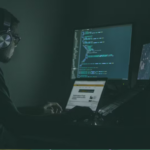The current role of cybersecurity in today’s companies is often shrouded by talks of cyberattacks, breaches, hackers, loss of funds and loss of trust. And there is definitely truth in this. However, this also presents a company with a rare gift, and that is to have two of its most significant contributors, the CIO and the CMO, to collaborate. On paper, the two cannot be more different. CMO’s often have to deal with the externals of the company and with people. The CIO’s usual domain resides in the machines and security infrastructure that allows the business to operate and to operate in relative safety. So, besides the fact that they both work on the similar devices, there should be relative overlap between the two. The talk of cybersecurity, however, provides that.
The talk begins with the basics and the most obvious, customer experience, transactional ease-of-use and online security. The CMO receives feedback from the front line and submits a request for changes, then the CMO’s team implements said changes. But now, the discussion can grow beyond such a binary conversation. Take the implementation of new or updated security measures for example. In the old days, such an install would either be shrouded in secret or would be thought uninteresting to anyone else outside the IT department that it would be glazed over by other departments like marketing.
But by working together the CMO and CIO can use a cybersecurity implementation to simultaneously make the company and its users safer, and strengthen the company brand. Using digital marketing campaigns, the company can show that it is taking the initiative to increase security measures. It is not just being reactive (like other companies), but is taking a proactive approach and are doing so with the customers’ best interests in mind. Imagine, the impact that such a campaign would have on reputation, public opinion and brand loyalty.
Also by partnering with a security organization and proudly displaying their logo on the website among the other security certificates and literature, the company is not only showing to the public that it has taken extraneous measures to protect its data and information, but is also letting hackers and cybercriminals know that they are no easy target and that they are equipped to do battle.
The majority of cybercriminals are opportunistic by nature. Unless it is a concerted (or sponsored) effort, most hacks and breaches only happen because an unwitting employee slipped up. While they are persistent, few cybercriminals often have the tenacity or skill level to go toe to toe with a fully implemented, multilayer security system. Companies take great comfort in this, and they should let the whole world know about it.
So while modern cybersecurity measures may be costly to get up and running, the investment can pay off two-fold in the long run. On one hand the company gets a state-of-the-art hacker deterrent, on the other hand they have a PR gold mine that they can use to attract new business and strengthen old bonds.
Article written by Amazing Support
Award winning Managed IT Support & IT Consultancy for SMEs in London, Hertfordshire and Overseas.






























